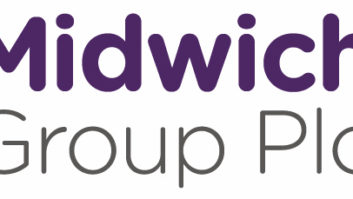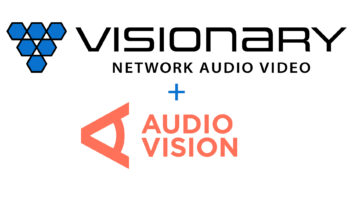
Does 10Gb Ethernet mean the end of HDBaseT, asks Rob Lane?
I recently hosted an Installation webinar on the future of AV distribution. Presented by video distribution specialists ZeeVee, the webinar explored how – thanks to 10Gb Ethernet – it’s now possible to send uncompressed 4K video over IP, why AV over IT could be set to replace proprietary AV distribution solutions such as HDBaseT as a single platform, and why the IT community and their clients are likely to be more responsive to what is a more cost-effective, ‘unstranded’ investment.
While it’s obvious that ZeeVee, with its proprietary ZyPer4K technology solutions, sees a rosy future for AV over IP, what do others in the AV industry think? Is this the tipping point for a full convergence of AV and IT; an Internet Protocol match made in distribution heaven?
Most of those I’ve spoken to agree that the dominance of AV over IP is inevitable, although we’re not quite there yet; HDBaseT will eventually be usurped, although this is by no means inevitable; and it may take up to 10 years (although most believe five years to be a more realistic shelf-life).
The perceived hurdles to AV over IP appear to be the need for a shift in emphasis to utilise existing infrastructures – CatX and fibre – for IP distribution of video, audio, control and POE+ lighting, as well as ‘eye-watering’ data rates associated with UHD. Nobody I spoke to thought there’d be a problem with hardware adoption, with some noting that some HDBaseT manufacturers are already releasing AV over IP products. Indeed, it may be the manufacturers that ultimately decide when IP takes over from traditional switching, by phasing out existing tech – although most are offering both at the current time.
Investment
Of course, manufacturers have also spent millions developing proprietary standards for their systems to offer HDBaseT compatibility, and they’re unlikely to flush this away any time soon. Indeed, considerable ROI guarantees will be required for R&D on AV over IP as well.
HDBaseT is still highly regarded, and widely seen as a trusted, reliable solution. Most see it remaining as a robust option for many years to come – perhaps alongside AV over IP.
As to whether or not the IT community will be more responsive to what could rightly be considered a more ‘unstranded’ investment, some see security as the main persuader here; if manufacturers get this right, the IT community, their clients and end-users are likely to favour AV over IP as a ‘common goal’ when compared with HDBaseT – unless, of course, they have already invested in this trusted distribution solution.
However, others told me that there is still hostility in the IT industry towards AV over IP – particularly, and predictably as a result of security concerns –while, at the same time, end-users are more willing to explore new solutions that utilise existing equipment, rather than reinvesting in HDBaseT. It’s worth noting, of course, that AV over IP isn’t investment free, with most solutions requiring separate switches, AV LANs and management systems, which rival HDBaseT solution investments.
ZeeVee view
So, taking their championing of ZyPer4K technology as a given, how does ZeeVee view the AV over IP debate?
“Traditional AV integrators sometimes struggle to come to terms with change, especially when it involves IP solutions – even more so if they have had their fingers burnt in the past,” opines ZeeVee EMEA sales director Rob Muddiman. “We have to educate them and bring them round, but the smart will adopt early. The ones that don’t may lose out as IT integrators pick up the baton.”
Scare tactics, perhaps, but if you agree that the in-house IT community is, at the very least, hugely influential when it comes to AV procurement decisions, this must be a serious consideration.
Decision makers at the business end of some of today’s high-value installations are increasingly IT departments, as opposed to facilities departments, of course, and these departments have historically dealt with ‘technology services businesses’ (IT integrators and service providers in other words). The AV industry needs its clients’ IT departments on side, and if that means favouring AV over IP ahead of existing distribution solutions, this might just be the dynamic that – sooner rather than later – heralds the beginning of the end for HDBaseT.







